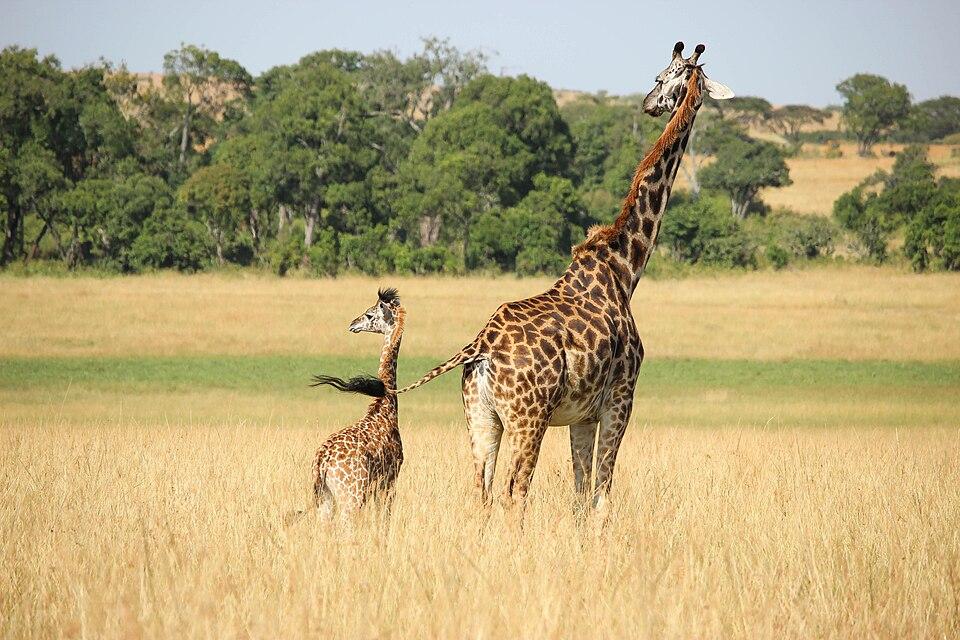
Timelines 10
Man and his Senses 10
Man and his Inventions 10
Geography 10
Fauna 10
Timelines 10
Man and his Senses 10
Man and his Inventions 10
Geography 10
Fauna 10

“Allomothering” describes a familiar pattern: an older sister carrying an infant, a neighbour standing watch at a nursery, a non-mother female offering milk to a non-offspring young. The term covers a range of behaviours — carrying, grooming, feeding, protecting and, in its most intimate form, allonursing — and appears across insects, birds and mammals. Ethologists have long treated it as a key window into the social logic of groups: who helps, when, and why.
It becomes clearer when one moves from definition to data. In Prague and other Czech zoological gardens, long-term observational work has produced surprisingly robust evidence of allomaternal care in giraffes. Research reports high rates of allonursing in captive giraffes: across multi-year records researchers found that a large majority of females engaged in nursing non-offspring calves, and calves commonly suckled from more than one female. Those patterns emerged from systematic notes on 24 females and 37 calves observed over many seasons.
Far from being anecdotal, these Czech data have been analysed against competing evolutionary ideas. Observers considered hypotheses ranging from milk theft (calves opportunistically suckling) to reciprocity among females, to kin selection and the learning to mother model. The captive setting — with known individuals, controlled feeding and regular monitoring — proved particularly useful for testing predictions about allonursing's costs and benefits: if adults pay a physiological cost to feed non-offspring, why do they do it? Long-term records allowed researchers to show that high rates of allonursing can coexist with clear hierarchies and social preferences among females.
The giraffe examples are not exotic curiosities but instances of a widespread behavioural theme. Review literature on allonursing summarises cases from many species — from callitrichid primates where cooperative breeding is the norm, to sporadic allonursing recorded in seabirds, camelids and farm stock. These comparative reviews emphasise two points: first, that allomaternal behaviours take many forms and are context-dependent; and second, that clarifying its adaptive value requires careful measures of costs (milk loss, increased disease risk) and benefits (improved survival, social alliances).
Field observations broaden our view. A field account of simultaneous multiple-calf allonursing by wild Masai giraffes recorded an adult female permitting three calves to nurse at once. Such wild observations, rare but replicable, suggest the behaviour is not merely an artefact of captivity but an occasional feature of giraffe social life that likely hinges on social tolerance, prior social bonds and local ecology. The Czech captive work thus sits alongside field records to show a species with a richer social repertoire than previously supposed.
Turning now to India, the pattern of cooperative caregiving takes an equally compelling, if different, form. The capped langur (Trachypithecus pileatus), a South Asian colobine, has been a classic subject for studies of allomothering: focused observations show infants spending a substantial portion of early life in the care of one or more adult females other than the mother. In these groups a single allomother may act as the primary non-maternal caregiver for an infant during its first weeks and months, a pattern that supports infant independence while allowing mothers to undertake foraging and other tasks.
The capped langur work matches the hypotheses tested in Czech giraffe studies. In both cases researchers ask whether allomaternal care functions as a way to learn maternal skills, to raise inclusive fitness for kin, or to forge alliances that stabilise social life. In the langur case, as in many primates, females with close social ties are the likeliest allomothers; infants that receive such care gain opportunities for social learning that influence later behaviour. India’s primate research thereby contributes a comparative primate perspective that helps make sense of the giraffe case, and vice versa.
It is worth stressing differences alongside similarity. The Czech work rests heavily on zoo records — long, continuous datasets where demographic parameters and feeding regimes are known. The Indian primate studies are usually field-based, mixing focal follows with natural history. Each setting offers strengths and weaknesses: captive studies can capture frequencies and physiological costs more precisely; field studies reveal how caregiving plays out under predation, resource variability and kin structure. Comparative reading of both thus improves conclusions about adaptive function.
There are also striking convergences. Across species, allomothering often peaks when the costs to allomothers are low and the benefits to infants are high — when milk is abundant, when group cohesion matters, or when juveniles can learn by repeated caregiving. In giraffes the combination of social tolerance and calf opportunism produces high allonursing rates; in capped langurs the presence of a dedicated allomother accelerates infant independence. Both patterns illustrate the same underlying ecological logic: caregiving is a social resource allocated strategically within groups.
Finally, a comparative note on method: the best accounts marry naturalistic observation with hypothesis testing. Long-term captive giraffe projects, with their careful tallying of nursing bouts and hierarchical interactions, and Indian primate studies, with their ethograms and time budgets, show how different methods can reach convergent understandings. The lesson is practical — if we wish to know why an adult will allow another’s young to nurse, we must measure cost, track social ties, and read the behaviour in the living ecology.
Sources:
https://tinyurl.com/2cpvx63a
https://tinyurl.com/23ymjtdw
https://tinyurl.com/27pjmmea
https://tinyurl.com/29e4tehx
https://tinyurl.com/27774evh
https://tinyurl.com/2yzv8q7s
https://tinyurl.com/27774evh
https://tinyurl.com/2d5xphrw
https://tinyurl.com/26he4dp8